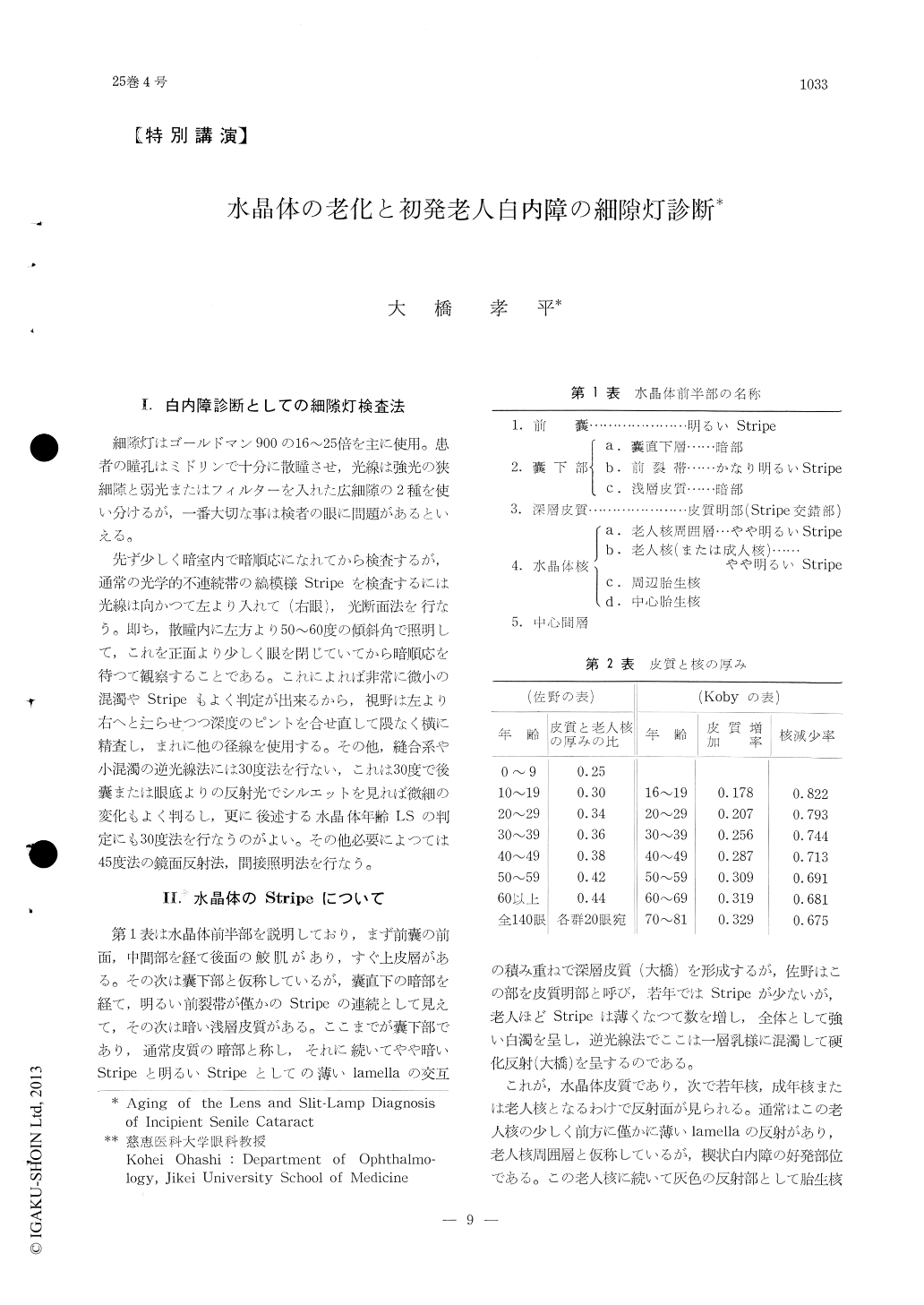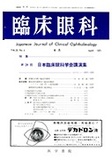Japanese
English
- 有料閲覧
- Abstract 文献概要
- 1ページ目 Look Inside
I.白内障診断としての細隙灯検査法
細隙灯はゴールドマン900の16〜25倍を主に使用。患者の瞳孔はミドリンで十分に散瞳させ,光線は強光の狭細隙と弱光またはフィルターを入れた広細隙の2種を使い分けるが,一番大切な事は検者の眼に問題があるといえる。
先ず少しく暗室内で暗順応になれてから検査するが,通常の光学的不連続帯の縞模様Stripeを検査するには光線は向かつて左より入れて(右眼),光断面法を行なう。即ち,散瞳内に左方より50〜60度の傾斜角で照明して,これを正面より少しく眼を閉じていてから暗順応を待つて観察することである。これによれば非常に微小の混濁やStripeもよく判定が出来るから,視野は左より右へと辷らせつつ深度のピントを合せ直して隈なく横に精査し,まれに他の径線を使用する。その他,縫合系や小混濁の逆光線法には30度法を行ない,これは30度で後嚢または眼底よりの反射光でシルエットを見れば微細の変化もよく判るし,更に後述する水晶体年齢LSの判定にも30度法を行なうのがよい。その他必要によつては45度法の鏡面反射法,間接照明法を行なう。
The slit-lamp findings of incipient senile cata-ract are discussed based upon the author's ex-perience for 20 years. The study was basedupon documented slitlamp findings of 500 clini-cal cases as well as 50 histological and electron microscopic materials obtained through cataract surgery.
The author described a new type of leaf-shap-ed cataract which is to be differentiated from classical cuneiform or anterior cupuliform cata-ract. A proposal is made as to a standardized clinical classification and description of cataract in regard to lens senility index.

Copyright © 1971, Igaku-Shoin Ltd. All rights reserved.


